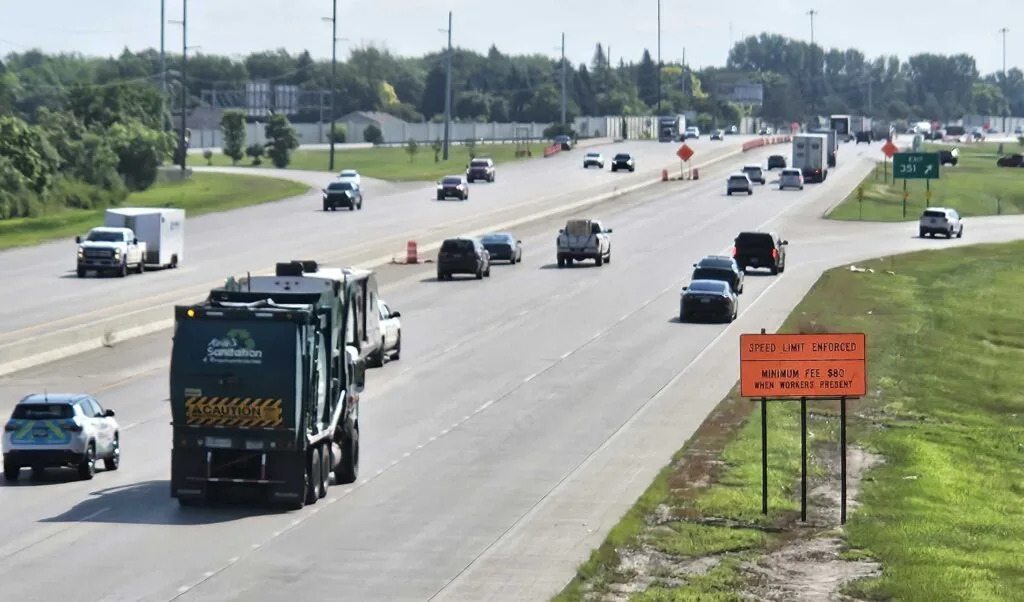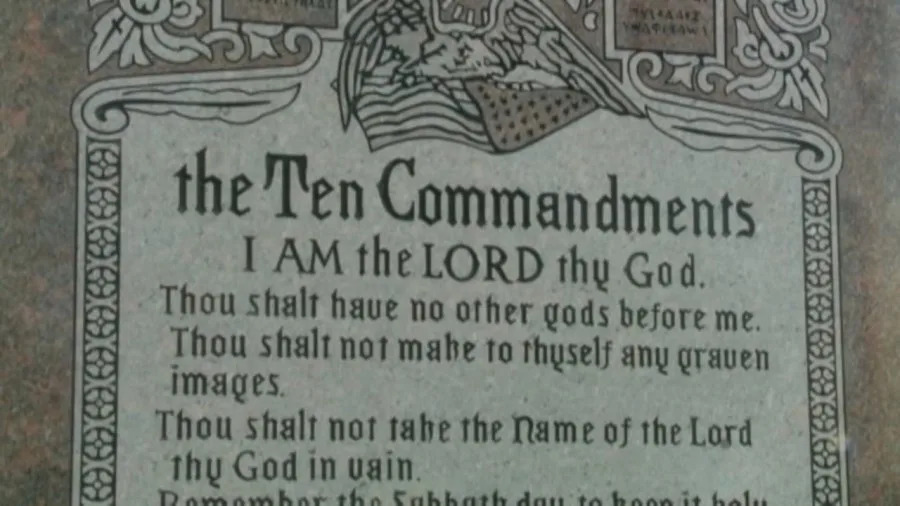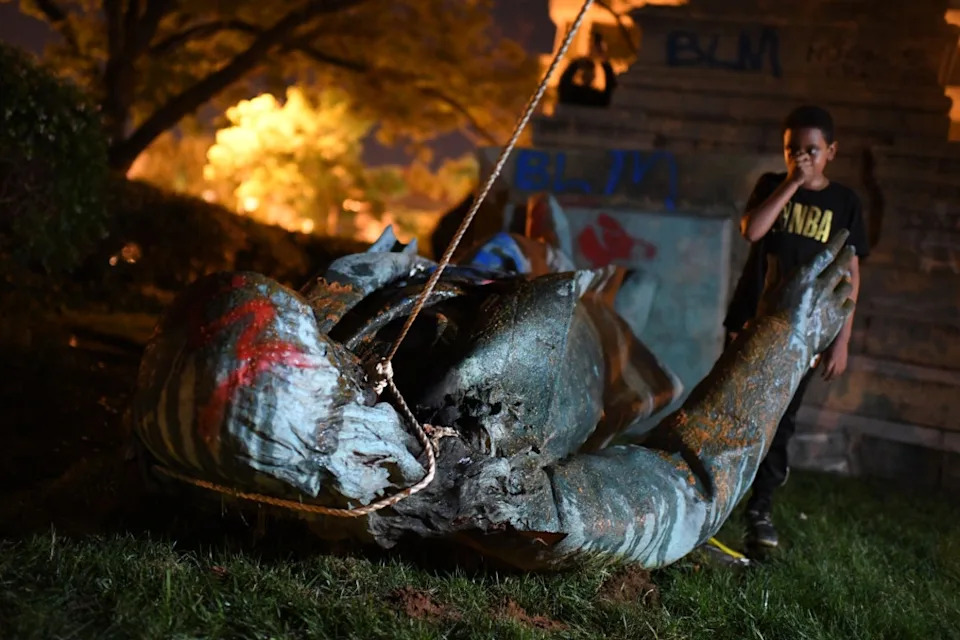
Drivers in Fargo, North Dakota, on July 28, 2025, are warned about an $80 fine for speeding in a construction zone. Minimum fines for speeding in a construction zone increase to $150 on Aug. 1, 2025. Other speeding fines will increase, too. (Jeff Beach/North Dakota Monitor)
North Dakota’s interstate speed limit is going up to 80 mph on Friday, but in some areas, the speed limit will go down.
The state is lowering the speed limit to 70 mph on interstate segments at Dickinson, Grand Forks, Jamestown, Valley City and Medora. Those areas had previously been 75 mph.
“The biggest change for people will be slowing down in those areas, and so I think that will be more what we’ll hear about after Aug. 1 than even the 80 miles per hour change,” Lt. Jenna Clawson Huibregtse with the North Dakota Highway Patrol said.
Bismarck and Fargo have already had slower interstate speeds and those areas are expanding.
The 55 mph speed limit in West Fargo will stretch west to the Sheyenne Street exit. The lower speed limit area east of Bismarck will be lengthened by one more exit, to Exit 161.
The higher speed limit, along with an increase in fines for speeding, was hammered out in a compromise in the waning days of this year’s legislative session.
Other changes approved by the Legislature affecting drivers include new rules on tinted windows and the availability of what are known as “blackout plates” — license plates with white letters and numbers on a plain black background.
North Dakota’s rule has been that tinting of windshields and front windows must let at least 50% of the sunlight through. That will be reduced to 35%
Those changes also take effect Friday.
While the speed limit is going up, drivers won’t see the new signs right away.
The contractor hired by the North Dakota Department of Transportation won’t be replacing the 75 mph signs with the 80 mph signs until Monday, and it will take at least two weeks for the new signs to go up.
Drivers can still go 80 legally though.
“It’s North Dakota law, so people are allowed to drive 80,” Clawson Huibregtse said.
Many drivers already go 80. She said the average speed on North Dakota interstates is 81 mph.
Clawson Huibregtse said the faster speeds mean drivers should increase their following distance.
“You have to give yourself more time to stop if something occurs in front of you or somebody jams on their brake,” she said.
The bill that increased the speed limit also increased speeding fines, but with a simpler calculation for those fines, which Clawson Huibregtse said is a benefit to state troopers.
She said troopers previously had to consult about 10 different tables to calculate the speeding fine.
“This simplified it down to two plus your special zones like construction zones and school zones, so significantly less cumbersome,” she said. “It did increase fine fines a little bit, but we are still the cheapest state in the nation to get a speeding ticket.”
There also are increased fines for areas such as school zones and construction zones. The additional fine for speeding in a construction zone with workers present would increase from $80 to $150.
For highways with a speed limit of 65 mph or higher, the fine will be $20 or $5 for every mile per hour over the limit, whichever is greater. If the driver is going more than 16 mph over the limit., $20 is added to the fine. A driver ticketed for going 95 mph in a 80 zone would be fined $75; but if the ticket is for 96 mph, the fine jumps up to $100.
SUBSCRIBE: GET THE MORNING HEADLINES DELIVERED TO YOUR INBOX







Comments